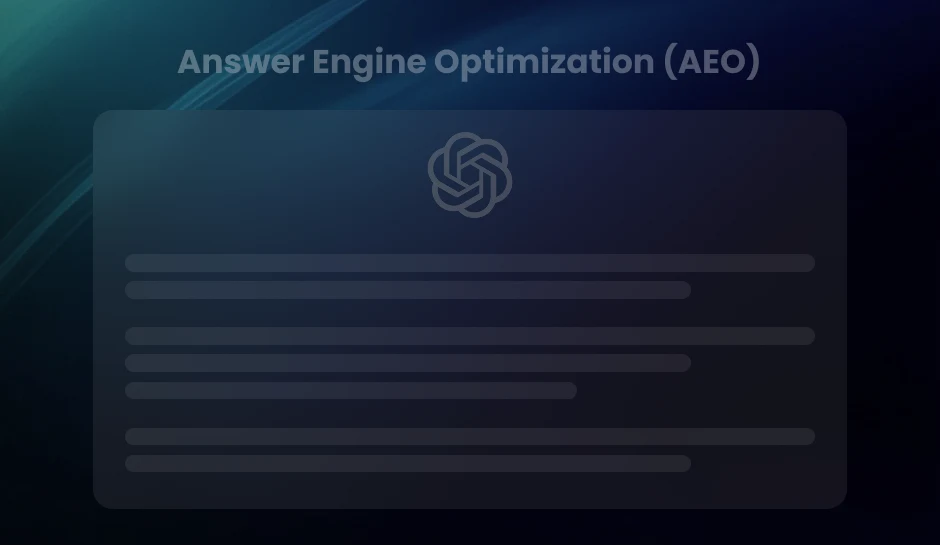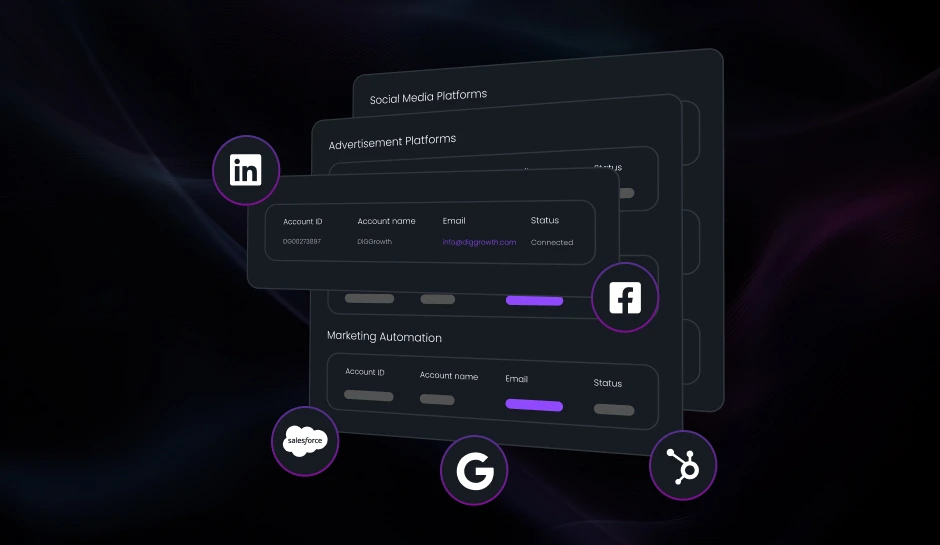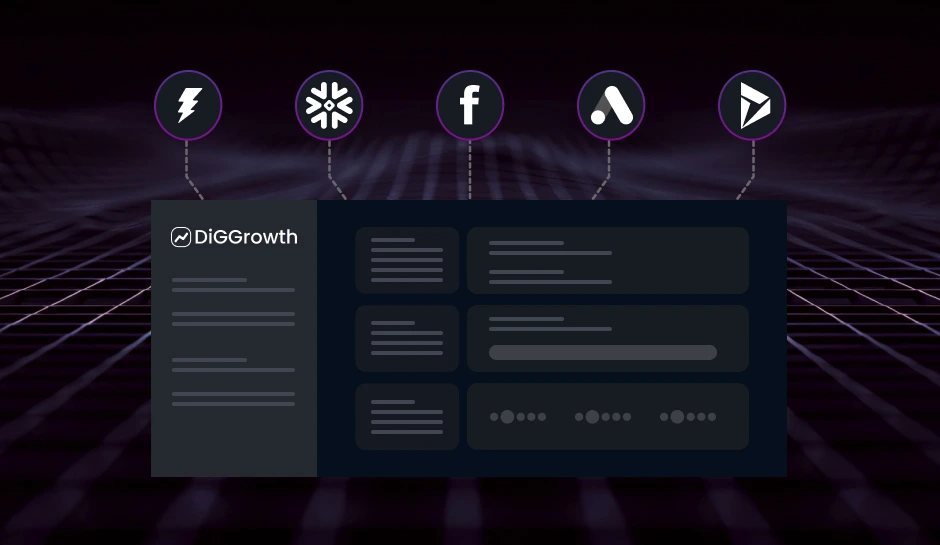
Performance Attribution Analysis Example: A Data-Driven Path to Results
Analyzing which efforts drive measurable results is crucial for strategic success. Performance attribution analysis connects actions to outcomes, offering clarity on the most impactful strategies and tools for achieving better business performance. This blog explains its real-world applications and actionable benefits.
What if you could identify the exact drivers of your business performance? Many organizations struggle with this question, facing challenges like disjointed data, unclear accountability, and an inability to measure the impact of specific actions. These obstacles often lead to wasted resources, underperforming strategies, and missed growth opportunities.
Performance attribution analysis provides the clarity businesses need. Analyzing data and linking outcomes to specific metrics or initiatives uncover actionable insights that drive better decisions. This approach highlights what is working and reveals areas for improvement, enabling leaders to allocate resources more effectively and achieve measurable results.
This blog will explore a real-world example of performance attribution analysis, demonstrating how it can resolve these challenges and guide strategic growth.
What is Performance Attribution Analysis?
Performance attribution analysis is breaking down a business’s results to understand what contributed to its success—or lack thereof. It goes beyond measuring outcomes by linking specific actions, metrics, or strategies to those results.
For example, in a marketing context, it helps determine which channels or campaigns generated the most leads or revenue. Product management might uncover how certain features drive customer retention or churn. This detailed understanding enables businesses to make informed decisions and optimize their strategies for greater impact.
While the concept may seem straightforward, the complexity arises when multiple factors interact, such as overlapping campaigns, diverse customer touchpoints, or external influences like market trends. This is where structured attribution models and robust data analysis come into play, providing clarity amidst the complexity.
Performance Attribution Analysis: A Practical Example
Business Context
Let’s consider a company that has launched a multi-channel marketing campaign to increase lead generation and revenue. The campaign spans several channels, including email marketing, paid search ads, social media promotions, and webinars. While there has been an increase in sales, the company is unsure about which channels are responsible for the growth.
The objective of the performance attribution analysis is clear:
- Increase ROI by identifying the channels that generate the most conversions, allowing for more precise resource allocation.
- Optimize marketing strategies to ensure the most effective channels receive more focus and resources, while underperforming ones are reconsidered or improved.
Step-by-Step Breakdown:
1. Data Collection
The first critical step in performance attribution analysis is gathering data from all relevant sources to evaluate the effectiveness of each channel accurately. The data includes:
- Campaign performance metrics: These are tracked through the CRM system and provide data on how many leads were generated from each marketing channel and how many were converted into paying customers.
- Lead generation data: The number of new leads gathered from each campaign touchpoint is captured via forms, landing page submissions, and sign-ups.
- Revenue data: Linking sales directly to each campaign allows the company to measure each channel’s true financial impact, including immediate revenue and customer lifetime value.
2. Analysis Process
The company employs a multi-touch attribution model to assign accurate credit to each channel. This model distributes credit across multiple customer interactions with the company before making a purchase. For example, suppose a customer receives an email, attends a webinar, and later clicks on a paid search ad before buying. In that case, all three channels receive a proportionate share of the credit for the conversion.
Another method the company might consider is the time decay attribution model, which gives more weight to the most recent touchpoints in a customer’s journey. For instance, if the customer’s final interaction before conversion was a paid search ad, the ad would receive a greater portion of the credit. Time decay models are particularly useful for understanding the immediate impact of channels that close the deal, like paid ads or direct sales calls.
3. Results
After running the attribution analysis, the company uncovers some key insights that provide actionable takeaways:
- Email marketing (Campaign A) generated 50% of the total leads but had a low conversion rate of just 10%. While email marketing is an effective channel for attracting prospects, it may require segmentation, follow-up strategies, or personalization improvements to enhance its conversion rate.
- Webinars (Campaign B), despite generating only 30% of leads, were responsible for a higher conversion rate of 25%. This indicates that webinars are a highly effective tool for engaging prospects and nurturing them into customers.
- Paid search ads (Campaign C) produced 15% of the leads and had a conversion rate of 20%. While the overall lead volume was lower, the higher conversion rate shows that paid search ads are particularly effective for targeting high-intent customers closer to purchasing.
- Social media ads (Campaign D) had the smallest impact, generating just 5% of new leads with the lowest % conversion rate of 5%. This suggests that social media ads might be more effective at building brand awareness or retargeting leads rather than directly driving conversions.
Strategic Actions Based on the Analysis
With these insights in hand, the company can implement several strategic changes to optimize its marketing efforts:
- Reallocate resources to webinars (Campaign B): Given that webinars had the highest conversion rate, the company can increase investment in webinar production, improve audience targeting, and offer more engaging content to boost their performance even further.
- Enhance email marketing (Campaign A): Since email marketing generated a significant portion of leads but had a lower conversion rate, the company can refine its email strategy. This might include better lead segmentation, personalized follow-up emails, or offering more targeted content to increase conversions.
- Increase investment in paid search ads (Campaign C): Paid search ads demonstrated high conversion potential. The company should allocate more budget to these ads to capture higher volumes of high-intent leads, ensuring the ads target the right audience with compelling offers.
- Revamp social media strategy (Campaign D): While social media ads contributed to a small portion of conversions, their low performance indicates a need for a reevaluation of strategy. The company could focus on retargeting strategies or shift the goal of social media ads toward engagement and brand awareness rather than direct lead generation.
Key Metrics and Models to Focus On
Performance attribution analysis is driven by metrics and models that provide clarity on campaign success and channel efficiency. By focusing on the right metrics and using appropriate attribution models, businesses can uncover actionable insights to optimize their strategies.
Key Metrics to Track
- Conversion Rates:
- Revenue Contribution:
- Churn Analysis:
- Lead Quality:
This metric shows how effectively a channel or campaign converts prospects into paying customers. It highlights which touchpoints are most successful in driving desired actions and helps refine strategies for underperforming areas.
Understanding how much revenue each channel generates provides a clear picture of ROI. This metric helps prioritize channels that deliver the most significant financial impact and reduce spending on low-yield efforts.
Performance attribution is not limited to acquisition. By analyzing churn, businesses can identify touchpoints or campaigns that might lead to customer drop-off and implement strategies to reduce attrition.
Beyond quantity, the quality of leads generated by different channels is critical. Attribution analysis can reveal whether a channel delivers high-intent leads that align with the business’s target customer profile.
Attribution Models to Use
- Multi-Touch Attribution:
- Linear Attribution:
- Custom Models:
This model distributes credit across all interactions in the customer journey, offering a holistic view of how each channel contributes to conversions. It is ideal for businesses with complex sales cycles involving multiple touchpoints.
Linear attribution assigns equal credit to all touchpoints in the journey. While simpler than multi-touch models, it ensures no channel is overlooked and works well for understanding balanced contributions across the funnel.
Businesses can develop tailored attribution models based on unique objectives and customer behaviors. For instance, a company might assign higher credit to channels that consistently drive high-value customers or to touchpoints closer to the conversion.
Using Tools and Techniques for Effective Attribution
Implementing performance attribution analysis effectively requires the right combination of tools, techniques, and strategic thinking. Modern solutions simplify complex data analysis, helping businesses turn raw data into actionable insights. Here is how tools, visualization methods, and a balanced approach to data interpretation contribute to better attribution analysis.
Popular Tools for Attribution Analysis
- Google Analytics 4 (GA4):
- HubSpot:
- DiGGrowth:
- Tableau:
GA4 offers advanced attribution models, such as data-driven attribution, which automatically assigns credit to touchpoints based on historical performance data. This is especially useful for tracking multi-channel campaigns and gaining insights into customer journeys.
Known for its robust CRM capabilities, HubSpot also provides multi-touch attribution reporting. This tool connects marketing and sales data, enabling businesses to measure how campaigns contribute to lead conversions and revenue.
DiGGrowth is a powerful platform designed to optimize marketing performance. With its advanced attribution analysis capabilities, it enables businesses to identify high-performing channels and fine-tune underperforming ones. DiGGrowth excels at integrating quantitative metrics with qualitative insights, offering a well-rounded view of campaign success.
Tableau helps businesses create dynamic data visualizations, turning complex attribution data into easily digestible dashboards. By presenting insights visually, teams can better understand channel performance and make faster, data-driven decisions.
Data Visualization Techniques
- Dashboards for Real-Time Insights:
- Customer Journey Mapping:
- Channel-Specific Heatmaps:
Interactive dashboards provide a clear overview of key metrics, such as channel contributions, conversion rates, and revenue impact. Tools like Tableau or DiGGrowth can display side-by-side comparisons of attribution models, helping stakeholders quickly identify trends and areas for improvement.
Visualizing the customer journey allows businesses to see how different touchpoints interact to drive conversions. For example, flow charts or Sankey diagrams can illustrate how leads transition between channels before converting, highlighting the most effective pathways.
Heatmaps show which touchpoints or campaigns generate the highest engagement. For example, a heatmap might reveal that webinar registrations peak after an email blast, suggesting a strong correlation between the two.
Balancing Quantitative Metrics with Qualitative Insights
While metrics like conversion rates, lead quality, and revenue contributions are crucial, qualitative insights add depth to attribution analysis. Combining both types of data ensures a more accurate and actionable strategy.
- Customer Feedback Integration: Using feedback from surveys or interviews helps contextualize quantitative findings. For instance, if webinars have a high conversion rate, feedback might reveal which topics or formats resonate most with the audience. DiGGrowth, for example, allows businesses to integrate such feedback into its platform for a more nuanced analysis.
- Understanding Behavioral Trends: Attribution models show what happens, but qualitative insights explain why. A spike in paid search conversions might correspond with a seasonal trend or a competitor’s campaign. Understanding these factors ensures the business adapts its strategy accordingly.
- Scenario Testing and Experimentation: Tools like DiGGrowth allow businesses to test different attribution models (e.g., time decay vs. linear) and scenarios. This enables companies to validate assumptions and select strategies that align with their goals.
Common Challenges in Performance Attribution Analysis
Despite its potential to drive informed decision-making, performance attribution analysis comes with its own set of challenges. Recognizing and addressing these hurdles is crucial for ensuring accurate insights and actionable results.
Data Silos
One of the most significant challenges in performance attribution is the fragmentation of data across teams or departments. Marketing, sales, and product teams often work with separate datasets and tools, creating gaps in the overall view of performance.
For example, marketing may track campaign metrics like click-through rates and impressions, while sales focuses on revenue and deal closures. Without seamless integration, businesses struggle to connect the dots between these datasets, leading to incomplete or skewed analyses.
Solution: Implement centralized tools like DiGGrowth or a robust CRM system that unifies data from different departments. This ensures that all relevant metrics are included in the analysis, providing a holistic understanding of performance.
Misinterpretation of Results
Attribution analysis often relies on models that assign credit to various touchpoints. However, these models are not foolproof and can lead to biased or inaccurate conclusions if not applied correctly. For instance:
- A last-touch attribution model might overemphasize the importance of the final interaction, neglecting earlier touchpoints that played a crucial role in nurturing the lead.
- A multi-touch model could dilute the impact of highly influential channels by spreading credit too thinly across the journey.
Misinterpretation of results can result in poor strategic decisions, such as overinvesting in channels with perceived high performance while neglecting genuinely impactful ones.
Solution: Choose attribution models that align with your business objectives and customer journey. Validate findings by comparing multiple models and cross-referencing them with qualitative insights, such as customer feedback or market research.
Ignoring External Factors
Attribution models often focus solely on internal data, overlooking external influences like market trends, competitor actions, or economic shifts. For example, a sudden spike in paid search performance might not result from a campaign improvement but from a competitor’s withdrawal from the market.
Similarly, seasonal trends or macroeconomic changes can distort attribution results if they are not accounted for. Relying exclusively on internal data risks misattributing success or failure to the wrong factors.
Solution: Contextualize attribution analysis by incorporating external data sources, such as industry benchmarks, competitor intelligence, or market trend reports. Tools like DiGGrowth can integrate external metrics alongside internal ones, providing a more comprehensive view.
Key Takeaways
- Performance attribution analysis provides clarity on the exact drivers behind business outcomes, enabling leaders to optimize strategies effectively.
- Robust data collection and analysis processes, including the use of multi-touch or time decay models, are crucial for accurate attribution.
- Tools like DiGGrowth enhance attribution by unifying data, providing actionable insights, and balancing quantitative metrics with qualitative inputs.
- Strategic adjustments based on attribution analysis—such as reallocating resources to high-performing channels—maximize ROI and improve campaign effectiveness.
- Addressing challenges like data silos, misinterpreted results, and overlooked external factors ensures a comprehensive and reliable attribution process.
Conclusion
Performance attribution analysis is not just a methodology; it is a strategic necessity for businesses striving to achieve data-driven growth. By breaking down results and linking them to specific actions, companies can uncover actionable insights that guide better decisions. Leveraging advanced tools like DiGGrowth and selecting the right attribution models ensures accuracy and relevance in analysis.
In a competitive landscape, the ability to pinpoint what works and what does not can be the difference between stagnation and growth. Do not let guesswork hold your business back—embrace the power of performance attribution analysis to steer your strategies toward measurable success.
Ready to elevate your business strategies with actionable insights?
Contact us at info@diggrowth.com to learn how our platform can help you drive results.
Ready to get started?
Increase your marketing ROI by 30% with custom dashboards & reports that present a clear picture of marketing effectiveness
Start Free Trial
Experience Premium Marketing Analytics At Budget-Friendly Pricing.

Learn how you can accurately measure return on marketing investment.
Additional Resources
Answer Engine Optimization (AEO): The New Frontier of SEO in 2025
As digital experiences continue to evolve, so does...
Read full post postIntegrating Data from Different Channels for a Holistic View of Your Marketing Performance
Who's your ideal customer? Where do they come...
Read full post postGet Your Channels to Play Nice: Integrated Data for Smarter Marketing
If you’re a savvy marketer, you’re living in...
Read full post postFAQ's
Performance attribution analysis links specific actions or metrics to outcomes, offering actionable insights. Traditional reporting typically summarizes data without delving into causal relationships or providing clarity on what drives results.
Yes, even small businesses can leverage performance attribution to optimize budgets, focus on high-impact channels, and improve decision-making. Simple tools like Google Analytics or affordable platforms like HubSpot can be highly effective.
AI automates data integration, identifies patterns, and recommends strategies by processing large datasets efficiently. It enables real-time adjustments and predictive modeling, enhancing the precision and effectiveness of attribution analysis.
Industries like e-commerce, SaaS, healthcare, and finance benefit significantly due to their reliance on multi-channel strategies. Performance attribution helps these sectors optimize campaigns, improve customer targeting, and maximize ROI.
It depends on the campaign and business objectives. For ongoing campaigns, monthly reviews work well. For shorter initiatives, analyze immediately after completion to derive actionable insights for future efforts.
 Shagun Sharma
Shagun Sharma  Sameer Pawar
Sameer Pawar 

